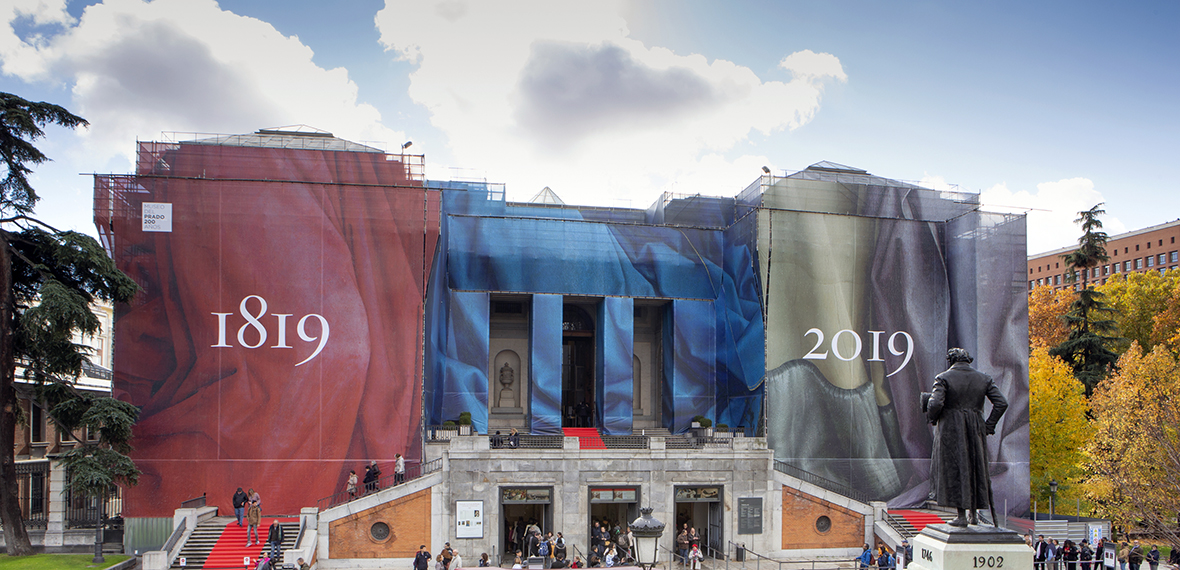HISTORY
History
The Museo del Prado houses one of the world´s finest collections of European art and paintings, most notably its Spanish, Italian and Flemish schools.
With an outstanding collection stemming from centuries of art patronage by the Spanish Crown and opened to the public in 1819 by the King Ferdinand VII, here visitors can not only admire the world’s largest collection of Spanish paintings, but also formidable collections of Flemish, and Italian paintings, as well as the most complete collection of works by artists such as Bosch, Titian, Rubens, Velázquez, Ribera, Murillo, Goya, and El Greco.
The Spanish painting collection spans from the twelfth to the nineteenth century with principal works of artists such as El Greco, Murillo, Zurbarán, Ribera, Sorolla, and, most notably, Goya and Velázquez, the last two of which are particularly brilliant. The incomparable collection of Goya’s works is comprised of more than 140 pieces; additionally, among other famous paintings in the Museum´s Collection are The Family of Charles IV, The Naked Maja, The Clothed Maja, The Second of May, 1808, and The Third of May, 1808, as well as his famous collection of Black Paintings.
As far as Velázquez is concerned, the Prado holds almost half of his life’s works, including almost all his most important paintings, such as Las Meninas, The Surrender of Breda, The Spinners, and The Drunkards.
Inside the Museum is an exceptional collection of principle works by great European masters, most notably of Spanish, Italian, and Flemish paintings and fewer but fantastic examples of German and French paintings.
The list of titles and names is extraordinary, including The Garden of Earthy Delights by Bosch, The Annunciation by Fra Angélico, The Three Graces by Rubens, Christ Washing the Disciples’ Feet by Tintoretto, Rembrandt’s Artemisa, Rafael’s The Cardinal, Dürer’s Self-portrait, The Emperor Charles V by Titian, The Descent from the Cross by Van der Weyden, and a number of notable others.
The original collection has expanded over time through careful selection, donation, and acquisition of works. The Museum also holds timeless sculptures, drawings, prints, architectural wonders, and photographs. In a new extension opened in 2007, designed by Pritzker Prize-winning architect Rafael Moneo, the Museum juxtaposes historic pieces with new and modern spaces for exhibitions, conservation, storage and visitor services.
The Museo del Prado holds this enormous collection of artistic treasures for the world community and also for future generations, welcoming in 2023 over three million visitors. The Museum has one of the world´s finest restoration workshops and shares a great wealth of knowledge with the global community through its excellent website.
www.museodelprado.es





